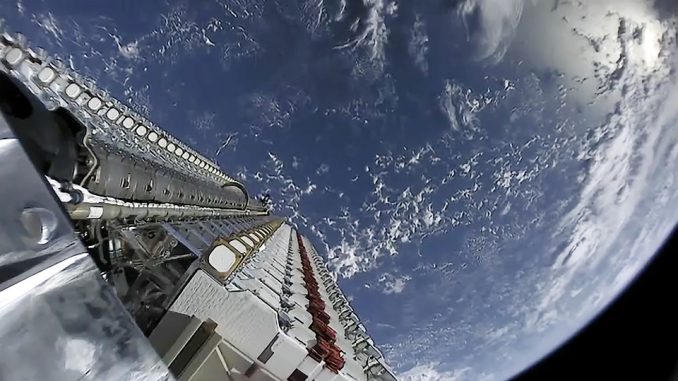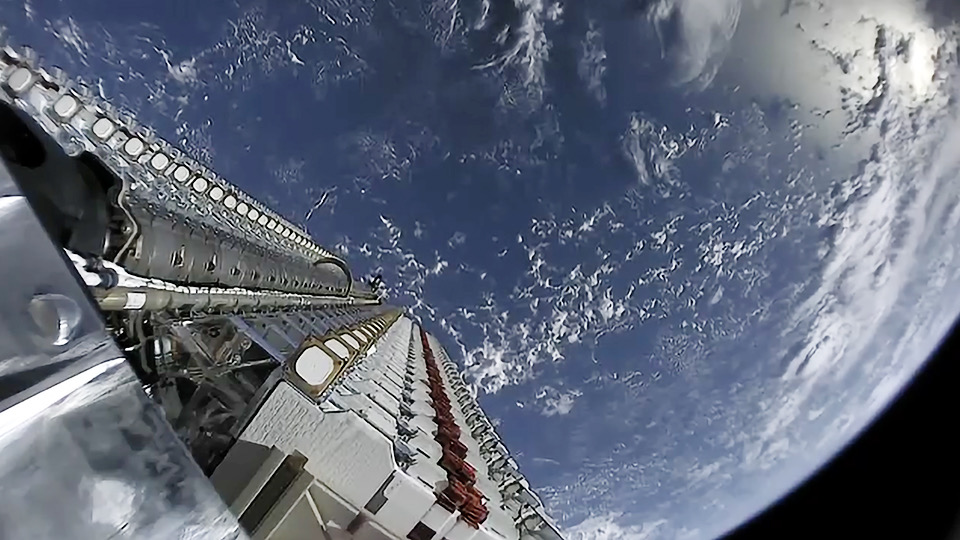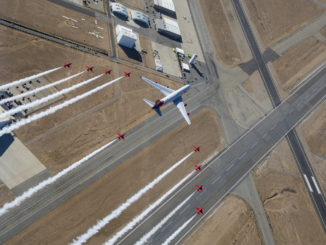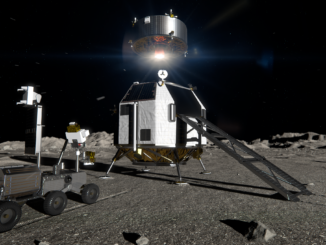
With so little going on in the skies whilst the world has locked almost all borders and commercial aviation has been grounded, I invite you to look a little higher.
Over the last couple of weeks, whilst we’ve been able to enjoy clear skies, there is a new excitement and intrigue; following numerous sightings of strange strings of lights making a smooth and steady journey across the night sky.
These exciting viewing experiences are the next step in the evolution of internet connectivity for the whole world.
This is Starlink.
In 2015, SpaceX founder Elon Musk announced his mission to provide low cost satellite based coverage to all areas of the planet. This ambitious project will provide connectivity to sparsely populated areas currently underserved due to the expense of laying the cables currently used to deliver internet services.

The dramatic coverage increase, estimated to be at least 400%, will provide communication capability to the most remote areas- including deep-sea operations such as fisheries and oil rigs- and also vastly improve aviation safety by creating more accurate monitoring of commercial flight paths all over the globe.
The revenue generated by this groundbreaking advance in technology will be used to fund the long term goal of putting humans on the surface of Mars – the next giant leap for mankind.
SpaceX’s primary goal is the development of reusable space technologies to reduce the presently obscene costs involved in exploration due to the use of single use rockets.
The progress made in this area is unlike anything we have seen since the first planes took to our skies. SpaceX were the first commercial company to dock with the International Space Station back in 2012, and they have made huge strides ever since.
Starlink will eventually make up a network of thousands of small satellites. These will be placed in Low Earth Orbit (an altitude of 2000km or less) by SpaceX’s 70 meter tall Falcon 9 rocket in an IKEA style flat-packed configuration of payloads of 60 at a time.
The original plan was to create a constellation network comprising 12,000 units. This number has since been increased, with the latest submitted plans detailing an additional 30,000 units, further boosting the network’s capability.
Each satellite in the project weighs 227kg, less than an average-sized motorcycle.
Two engines provide enough thrust to autonomously align each unit on its orbital path, and eventually direct it to deorbit when no longer operational.
They are constructed from materials which will entirely burn up as they re-enter the earth’s atmosphere, ensuring safe disposal with no recovery required.

When secured for launch, the units are compressed and stacked inside the faring of the Falcon 9 (picture a tube of Pringles) taking up less space than a standard bus.
The first test orbital delivery of just two units, nicknamed Tintin A and B, launched in February 2018 to orbit at an altitude of 514km (319 miles). Two years on, they are now in the process of deorbiting, a vital part of the concept.
The first placement of 60 satellites launched in November 2019, and to date there have been a further six such launches. Currently, there are 417 operational units in orbit, with the next launch scheduled for the 7th of May.
Concern has been voiced by the astrological community and ecological groups who are worried about the increase in space junk beyond our atmosphere. Their main concerns relate to the potential for damage to craft already in service, as well as between units.
For this reason, the systems are designed to be self positioning and able to avoid collisions should this pose a threat. This system also ensures the removal of redundant craft from the network, propelling themselves back towards our atmosphere. Being entirely constructed using materials which will almost completely burn up during descent ensures no environmental impact or damage to property.
Then there’s the visual obstruction.
Astronomers worldwide have raised concern over reflected light preventing ground telescopes seeing beyond the curve. All of these things have been considered and addressed.
One of the 60 units launched in January 2020, nicknamed Darksat, was finished with an experimental light reducing product to minimise ground-based visual obstruction. This will be monitored over the coming months to ascertain its effectiveness, as well as monitoring any resulting changes in performance and reliability. The data gathered during this time will help develop better measures to reduce light pollution in our skies.
The observation of these bizarre movements across the night sky by so many people around the world has quickly become popular. On a clear night they appear as bright stars parading in single file, steadily and with surprising speed, easily building anticipation as the next light pops into view. Watching them appear to race the clouds to be seen by so many is pretty special once it is understood what these “UFOs” will bring to our way of life.
We live in the most incredible technological age. A time that will be historically significant due to the rate of development in hardware. All of this is making our world seem ever smaller, bringing people from every nation closer together than previously imagined.
Eventually, the net cast by Starlink will not be visible to the naked eye in even the darkest skies, so this is the perfect time to invest in a reclining garden chair and get a peek at the future- before they hide.
Sighting opportunities for your area can be found by visiting
https://james.darpinian.com





